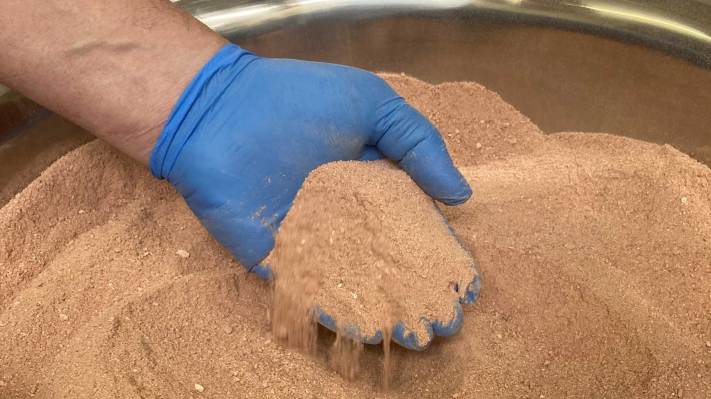We’ve spent the last century and a half pumping carbon dioxide into the atmosphere, and it’s clear that we’ll have to spend the coming decades removing a significant fraction of that.
But then what do we do with it all? Some people are proposing pumping it underground. Others think we can make things from it, including liquid fuels and concrete. Problem is, those are pretty low-margin opportunities today. One startup thinks the answer is to turn carbon dioxide into protein.
That company is getting a shot to test its thesis at scale, TechCrunch+ has exclusively learned. NovoNutrients will be building a pilot-scale plant with help from a $3 million technology and investment deal from Woodside Energy, one of Australia’s largest oil and gas companies, which has begun dipping its toes into the carbon capture waters.
NovoNutrients relies on bacteria to do the dirty work. The company has surveyed the scientific literature to find species that can use carbon dioxide in their metabolic pathways, allowing them to use the waste gas as energy. Its scientists have also discovered strains not otherwise known to science.
“Our technology is about how do you industrialize this naturally occurring metabolism?” CEO David Tze told TechCrunch+.
To do that, the company has developed its own bioreactor that helps the bacteria grow in water while consuming carbon dioxide and the other gasses that power its metabolism, including hydrogen and a nitrogen source like ammonia.
The source of the carbon dioxide can be pretty much any operation that’s polluting today, whether that’s oil and gas operations, chemical plants, fertilizer plants or cement plants. All that’s required is a supply of sufficiently concentrated carbon dioxide.
On the other end, NovoNutrients’ plants will produce a dry powder that can be refined into a number of different products, including protein supplements for people, animals and farmed fish. Depending on what bacteria are in the tanks, the powder can be tweaked to boost the value of the end product, which might be sold to specialty feed markets for farmers, for example.
NovoNutrients has engineered strains itself to improve their performance, but it also has wild-type and adapted strains. Some of those were obtained by running a fermenter for eight months fed by gasses produced by a cement plant in Cupertino. “We developed strains that grew three times faster than this wild-type strain that we started with,” Tze said.
Another way the startup can boost output is by using multiple different strains in one tank. One strain works to break down the primary inputs — carbon dioxide, hydrogen and a nitrogen source — while others go to work on the waste products produced by the first strain. “But more importantly, it means we can tailor the nutrition by adding or subtracting or swapping species or strains with this framework,” he added.
At least initially, NovoNutrients won’t own any of its commercial-scale plants. Rather, the companies that are producing the pollution will. NovoNutrients will sell the microbes to keep things running, and it’ll also take a technology license royalty, Tze said.
“And, of course, we’ll provide the whole technology package — both biology and hardware —and work with engineering procurement construction firms, selected by our partner licensee to get that built. We’ll train the operating employees and will be available for support.”
Partner companies will decide which products they want to produce, though NovoNutrients will help arrange long-term off-take agreements. “If you’re an oil and gas company or some other industrial company, you don’t have an established … business development team that knows how to work with nutrition companies.”
Those arrangements position NovoNutrients as a service-oriented company; one that will license its core technology, advise companies on plant construction and operation, and help find buyers for the end product.
Plenty of startups in other industries fell flat when they tried to tackle the whole enchilada. Battery companies circa 2012, for example, definitely bit off more than they could chew and found themselves deep in debt thanks to factories that they were ill-equipped to build, supply and manage. The licensing and service approach may limit the ultimate revenue upside, but it certainly limits the capital risk.
It also lets tech-centered startups do what they do best — focus on the science and technology — while bringing in partners who are well versed in building and operating large capital projects. If NovoNutrients can find enough companies that fit that profile, they might have found a business model that works for them.
